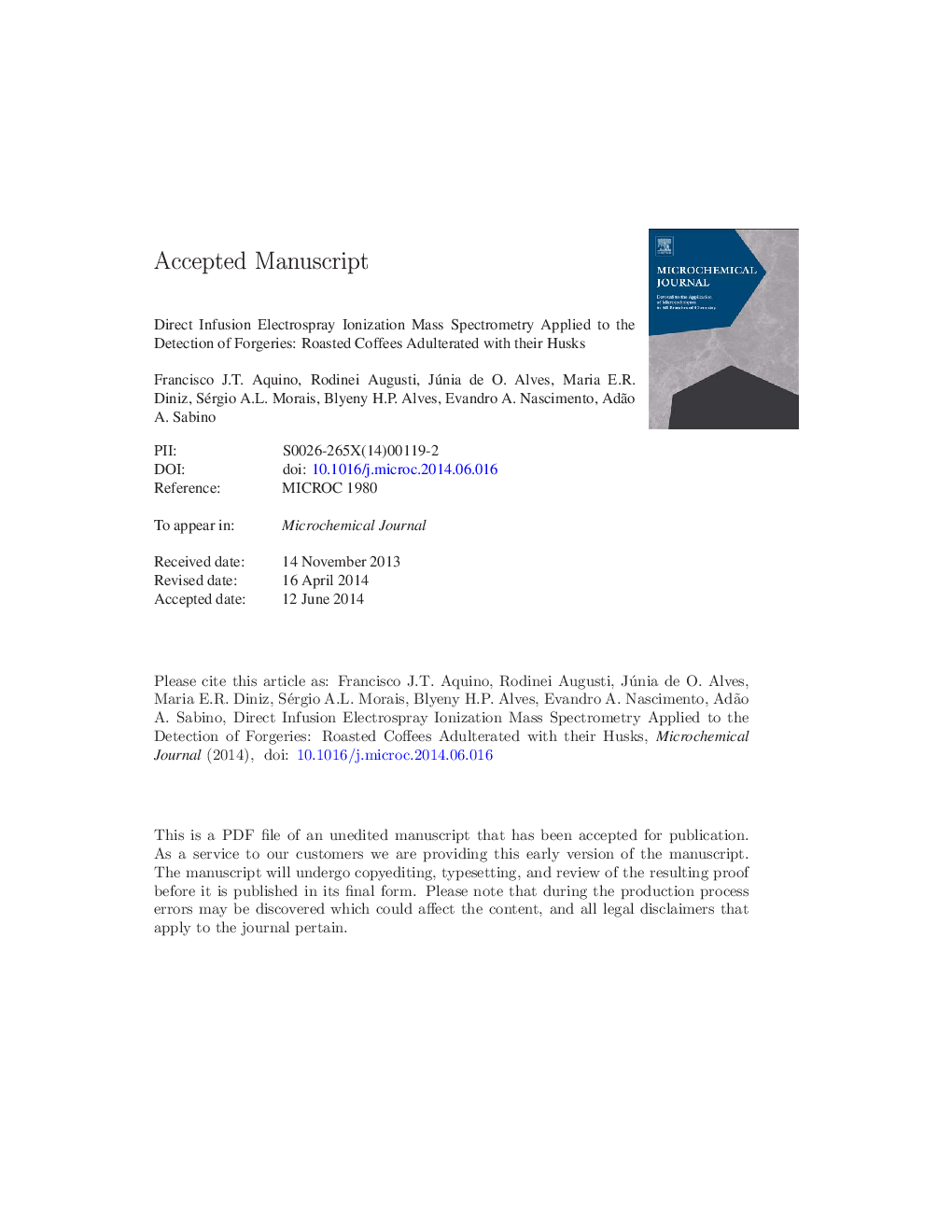| Article ID | Journal | Published Year | Pages | File Type |
|---|---|---|---|---|
| 7642899 | Microchemical Journal | 2014 | 21 Pages |
Abstract
Recognition of samples of coffee adulterated with their own husks has been a challenging task. The quite similar physical aspect of roasted grinded coffee husk when compared to ground coffee hampers a prompt visual distinction among both types of products. Several methodologies that make use of distinct analytical techniques have been developed for the authentication of coffee quality. In the present work, we demonstrate that direct infusion electrospray ionization mass spectrometry (ESI-MS) can be applied to detect counterfeit samples of roasted coffee adulterated by the addition of coffee husks (at a level of 10% w/w) in a quick and reliable way. The ESI-MS fingerprints (in both the negative and positive modes) revealed the presence of diagnostic markers, such as carbohydrates (for instance, saccharose), chlorogenic acids, caffeine, and other components related to the coffee flavor, that characterize each type of sample (coffee and rusk). Furthermore, the PCA (principal component analysis) methodology, applied to the whole set of the ESI-MS data (in the negative mode), grouped the samples into three clearly distinct categories: coffees, husks and blends. The results presented herein describe therefore an innovative and rapid methodology potentially useful in the diagnosis of such hardly-detectable type of adulteration.
Related Topics
Physical Sciences and Engineering
Chemistry
Analytical Chemistry
Authors
Francisco J.T. Aquino, Rodinei Augusti, Júnia de O. Alves, Maria E.R. Diniz, Sérgio A.L. Morais, Blyeny H.P. Alves, Evandro A. Nascimento, Adão A. Sabino,
